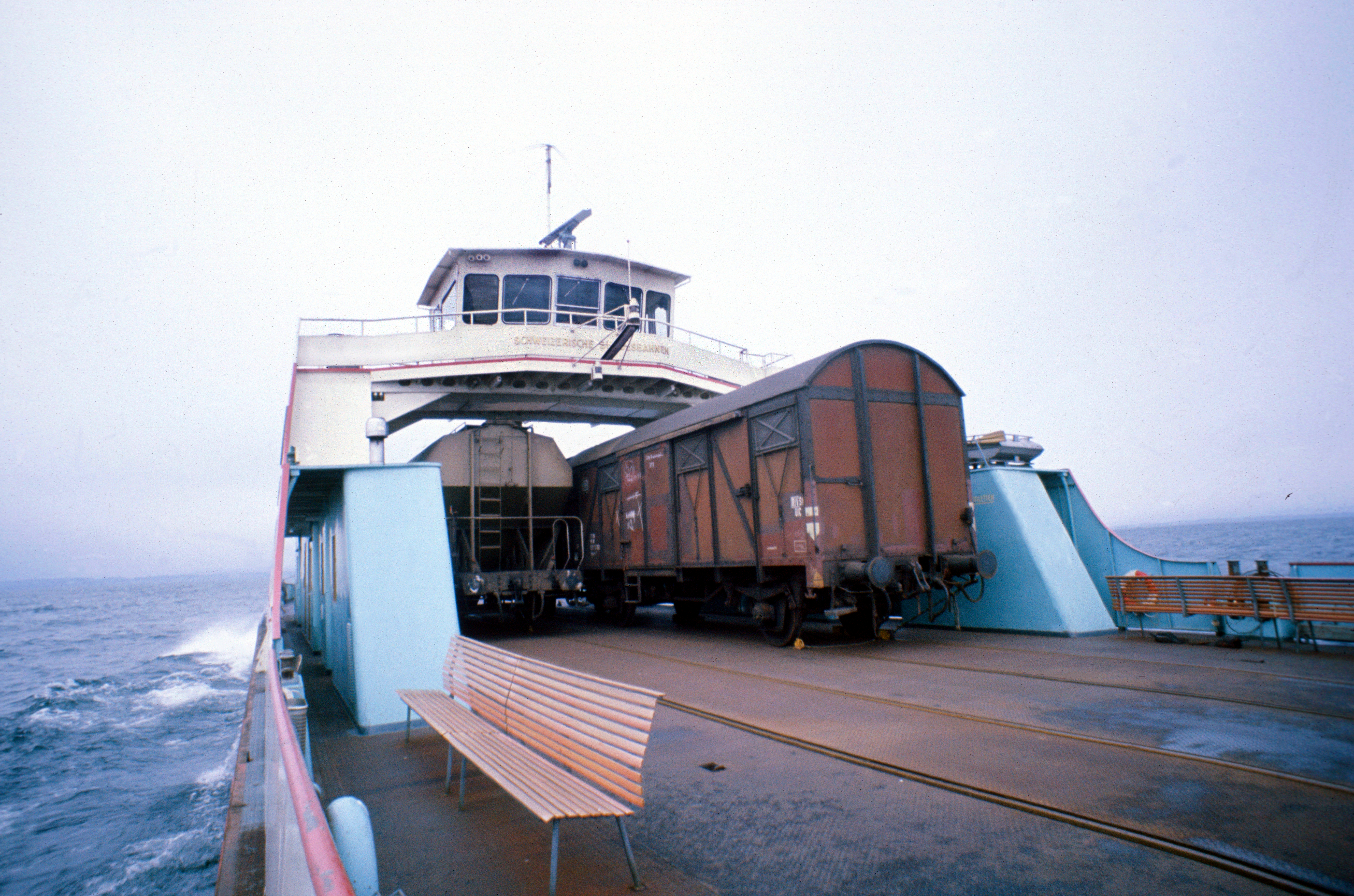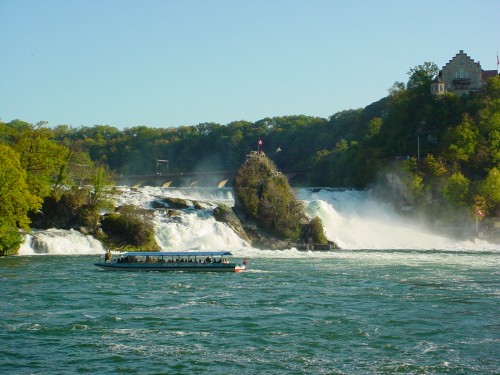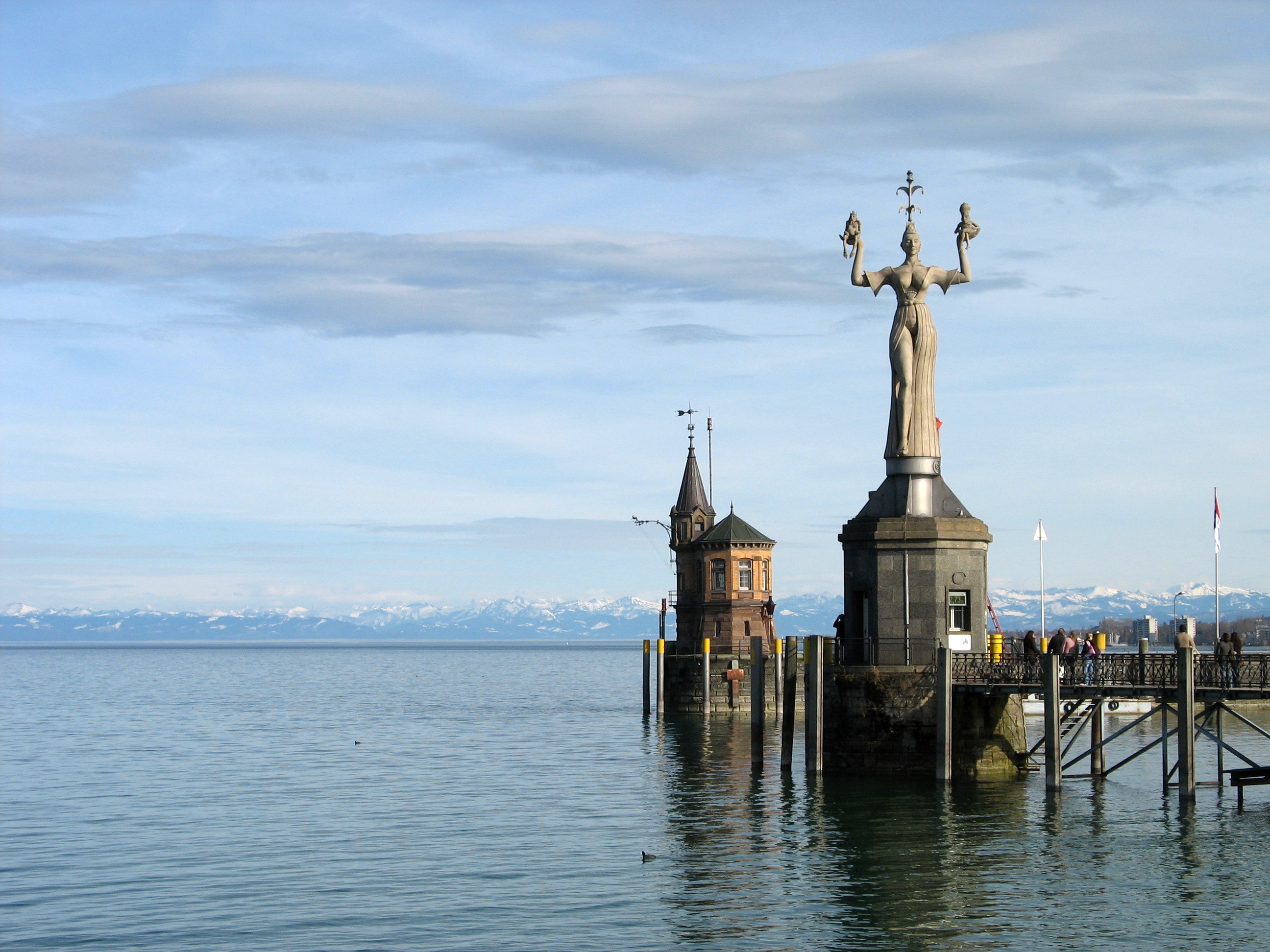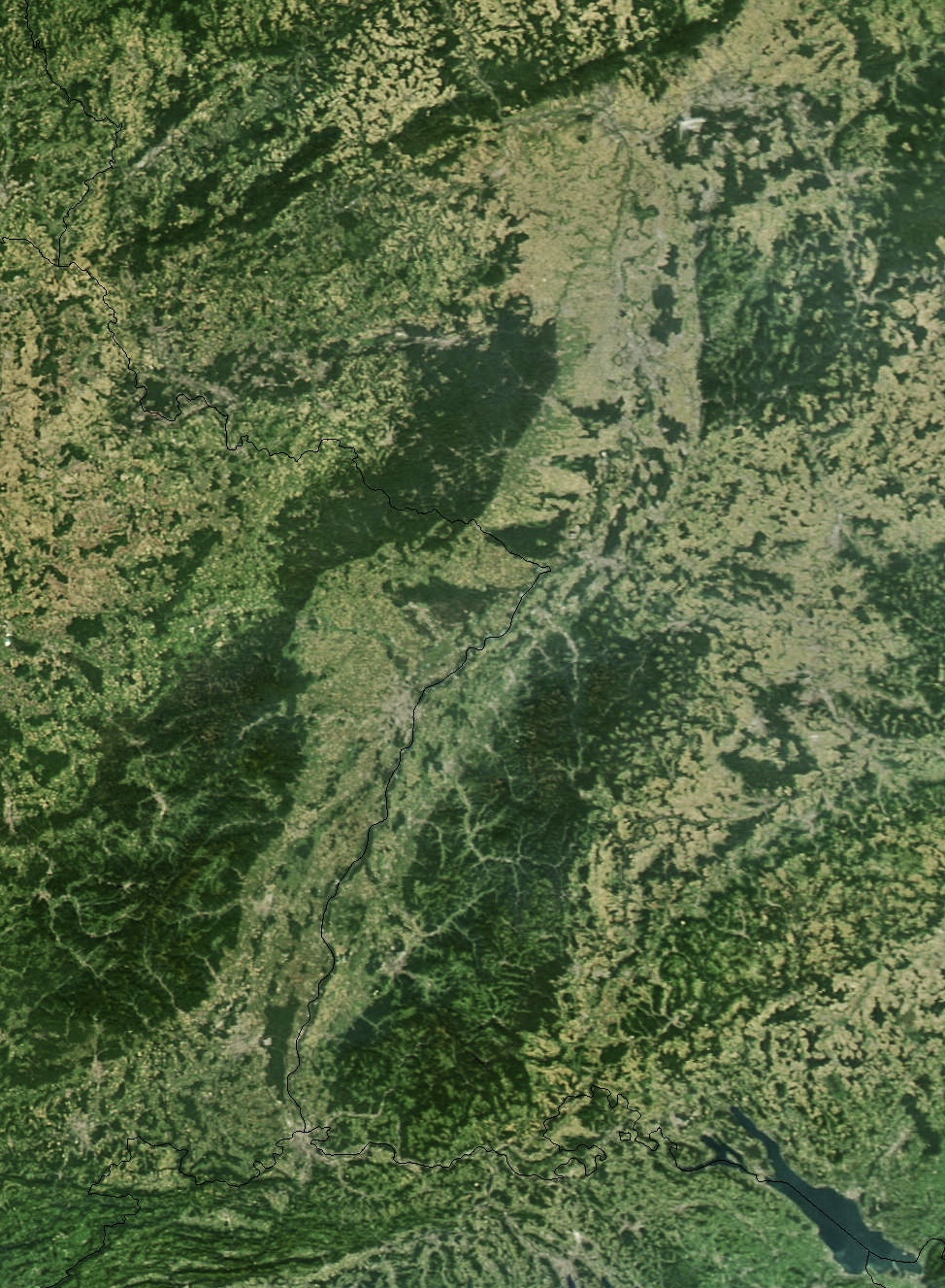|
Lake Constance Train Ferries
The Lake Constance train ferries (''Bodensee-Trajekte'') were rail ferry, train ferries that were set up in the 19th century by railway companies to transport rail freight wagons across Lake Constance (''Bodensee'') between the five states located around the lake at the time. In the heyday of the railways, they were of great importance, especially for freight traffic. Early history Traffic parallel to the shore initially dominated shipping on Lake Constance. It was not until railways reached some port cities that the importance of the connections across Lake Constance increased, especially for grain traffic. Starting from 1824, steamboats were operated by different companies, rising to 2,874 in 1874. * The first German railway company to reach Lake Constance was the Royal Württemberg State Railways (''Königlich Württembergische Staats-Eisenbahnen'') with its Ulm–Friedrichshafen railway, Southern Railway (''Südbahn'') in Friedrichshafen. The railway line from Friedrichshafen ... [...More Info...] [...Related Items...] OR: [Wikipedia] [Google] [Baidu] |
Train Ferry Rorschach 1976
A train (from Old French , from Latin , "to pull, to draw") is a series of connected vehicles that run along a railway track and Passenger train, transport people or Rail freight transport, freight. Trains are typically pulled or pushed by locomotives (often known simply as "engines"), though some are self-propelled, such as multiple units or Railcar, railcars. Passengers and cargo are carried in railroad cars, also known as wagons or carriages. Trains are designed to a certain Track gauge, gauge, or distance between rails. Most trains operate on steel tracks with steel wheels, the low friction of which makes them more efficient than other forms of transport. Many Rail transport by country, countries use rail transport. Trains have their roots in wagonways, which used railway tracks and were Horsecar, powered by horses or Cable railway, pulled by cables. Following the invention of the steam locomotive in the United Kingdom in 1802, trains rapidly spread around the world, allo ... [...More Info...] [...Related Items...] OR: [Wikipedia] [Google] [Baidu] |
Buchloe–Lindau Railway
The Buchloe–Lindau railway is a double-track, largely non-electrified main line in the German state of Bavaria. It runs through the Allgäu from Buchloe to Lindau in Lake Constance via Kaufbeuren and Kempten. Together with the connecting Munich–Buchloe railway it is known in German as the ''Bayerische Allgäubahn'' (Bavarian Allgäu railway). The Royal Bavarian State Railways (''Königlich Bayerischen Staatseisenbahnen'') put the line into operation between 1847 and 1854 as part of the Ludwig South-North Railway (''Ludwig-Süd-Nord-Bahn''). The Hergatz–Lindau section was electrified between 2018 and 2020 as part of the Munich–Lindau upgraded line project, which uses a shorter but largely single-track route via Memmingen. History The line from Buchloe to Lindau was built as part of the Ludwig South-North Railway from Hof via Augsburg and Kempten to Lindau. The first 20.3 kilometres from Buchloe to were opened to traffic on 1 September 1847. This was followed by the 4 ... [...More Info...] [...Related Items...] OR: [Wikipedia] [Google] [Baidu] |
Winterthur–Romanshorn Railway
The Winterthur–Romanshorn railway, also known in German as the ''Thurtallinie'' ("Thur valley line"), is a Swiss railway line and was built as part of the railway between Zürich and Lake Constance (Bodensee). It connects Winterthur with Romanshorn, where it formerly connected to train ferries over Lake Constance. It is the fourth oldest internal railway in Switzerland. Its construction was to be funded by the Zürich-Lake Constance Railway (''Zürich-Bodenseebahn''), but during the construction the company was merged with the Swiss Northern Railway (''Schweizerische Nordbahn'') to form the Swiss Northeastern Railway (''Schweizerische Nordostbahn'', NOB). The Winterthur–Romanshorn railway was opened on 16 May 1855 and the line from Winterthur to Oerlikon was opened on 27 December 1855. Zürich was reached on 26 June 1856 and the two existing NOB lines were connected. The Lake Constance train ferries on the Romanshorn–Friedrichshafen and Romanshorn–Lindau r ... [...More Info...] [...Related Items...] OR: [Wikipedia] [Google] [Baidu] |
Swiss Northeastern Railway
The Swiss Northeastern Railway (''Schweizerische Nordostbahn''; NOB) was an early railway company in Switzerland. It also operated shipping on Lake Constance (''Bodensee'') and Lake Zürich. Until the merger of the Western Swiss Railways into the Jura–Simplon Railway (JS) in 1890/91, it was the largest Swiss railway company. History The Swiss Northeast Railway was created on 1 July 1853 by the merger of the Swiss Northern Railway (''Schweizerische Nordbahn''—SNB— informally known as the ''Spanisch Brötli, Spanisch-Brötli-Bahn''), and the Zürich-Lake Constance Railway (''Zürich-Bodenseebahn''). The originally planned continuation of the Northern Railway from Baden, Switzerland, Baden to Basel initially failed due to the different interests of the cantons of Canton of Zürich, Zürich, Canton of Aargau, Aargau and Canton of Basel, Basel. The main initiator of the merger were the Zürich-based businessman Alfred Escher, who previously headed the Zürich-Lake Constance ... [...More Info...] [...Related Items...] OR: [Wikipedia] [Google] [Baidu] |
Schaffhausen
Schaffhausen (; ; ; ; ), historically known in English as Shaffhouse, is a list of towns in Switzerland, town with historic roots, a municipalities of Switzerland, municipality in northern Switzerland, and the capital of the canton of Schaffhausen, canton of the same name; it has an estimated population of 36,000 It is located right next to the shore of the High Rhine; it is one of four Swiss towns located entirely on the northern side of the Rhine, along with , the historic , and . The old town has many fine Renaissance era buildings decorated with exterior frescos and sculpture, as well as the old canton fortress, the ''Munot'' above the old town. Schaffhausen railway station is a junction of Swiss and German railway lines. Rheinfall railway, One of the lines connects the town with the nearby Rhine Falls in , Europe s largest waterfall and a popular Tourism in Switzerland, tourist attraction. The official language of Schaffhausen is (the Swiss variety of Standard) Swiss St ... [...More Info...] [...Related Items...] OR: [Wikipedia] [Google] [Baidu] |
Waldshut (district)
Waldshut () is a ''Landkreis'' (district) in the south of Baden-Württemberg, Germany. Neighbouring districts are (clockwise from the west) Lörrach, Breisgau-Hochschwarzwald and Schwarzwald-Baar; followed in the south by the Swiss cantons of Schaffhausen, Zürich and Aargau. History The district dates to the ''Oberamt Waldshut'', which was created when the area became part of the state of Baden in the beginning of the 19th century. After some changes it was converted to a district in 1938. In 1973 the districts Säckingen and Hochschwarzwald were dissolved and were partially added to the district Waldshut, which then grew to its current size. Geography The district covers the southern part of the Black Forest. The river Rhine The Rhine ( ) is one of the List of rivers of Europe, major rivers in Europe. The river begins in the Swiss canton of Graubünden in the southeastern Swiss Alps. It forms part of the Swiss-Liechtenstein border, then part of the Austria–Swit ... fo ... [...More Info...] [...Related Items...] OR: [Wikipedia] [Google] [Baidu] |
Basel
Basel ( ; ), also known as Basle ( ), ; ; ; . is a city in northwestern Switzerland on the river Rhine (at the transition from the High Rhine, High to the Upper Rhine). Basel is Switzerland's List of cities in Switzerland, third-most-populous city (after Zurich and Geneva), with 177,595 inhabitants within the city municipality limits. The official language of Basel is Swiss Standard German and the main spoken language is the local Basel German dialect. Basel is commonly considered to be the cultural capital of Switzerland and the city is famous for its many Museums in Basel, museums, including the Kunstmuseum Basel, Kunstmuseum, which is the first collection of art accessible to the public in the world (1661) and the largest museum of Swiss art, art in Switzerland, the Fondation Beyeler (located in Riehen), the Museum Tinguely and the Museum of Contemporary Art (Basel), Museum of Contemporary Art, which is the first public museum of contemporary art in Europe. Forty museums ... [...More Info...] [...Related Items...] OR: [Wikipedia] [Google] [Baidu] |
Grand Duchy Of Baden State Railways
Grand Duchy of Baden had its own state-owned railway company, the Grand Duchy of Baden State Railways (''Großherzoglich Badische Staatseisenbahnen or G.Bad.St.E.''), which was founded in 1840. At the time when it was integrated into the Deutsche Reichsbahn in 1920, its network had an overall length of about . History Foundation Baden was the second German state after the Duchy of Brunswick to build and operate railways at state expense. In 1833 a proposal for the construction of a railway from Mannheim to Basel was put forward for the first time by Mannheim businessman, Ludwig Newhouse, but initially received no support from the Baden state government. Other proposals too by, for example Friedrich List, were unsuccessful at first. Not until the foundation of a railway company in the neighbouring French province of Alsace, for the construction of a line from Basel to Strasbourg in 1837, did any serious planning begin for the building of a railway in Baden in order to avoid ... [...More Info...] [...Related Items...] OR: [Wikipedia] [Google] [Baidu] |
Konstanz
Konstanz ( , , , ), traditionally known as Constance in English, is a college town, university city with approximately 83,000 inhabitants located at the western end of Lake Constance in the Baden-Württemberg state of south Germany. The city houses the University of Konstanz and was the residence of the Roman Catholic Diocese of Konstanz for more than 1,200 years. Location The city is located in the state of Baden-Württemberg and situated at the banks of Lake Constance (''Bodensee'' in German). The river Rhine, which starts in the Swiss Alps, passes through Lake Constance and leaves it, considerably larger, by flowing under a bridge connecting the two parts of the city. North of the river lies the larger part of the city with residential areas, industrial estates, and the University of Konstanz; while south of the river is the old town, which houses the administrative centre and shopping facilities in addition to the ''Hochschule'' or the ''University of Applied Sciences''. C ... [...More Info...] [...Related Items...] OR: [Wikipedia] [Google] [Baidu] |
Singen
Singen (; Low Alemannic German, Low Alemannic: ''Singe'') is an industrial city in the very south of Baden-Württemberg in southern Germany and just north of the German-Swiss border. Location Singen is an industrial city situated in the far south of Baden-Württemberg in Germany close to Lake Constance, just north of the German-Swiss border. It is the most important city in the Hegau area. Landmarks The most famous landmark of Singen is Hohentwiel, a volcanic stub on which there are the ruins of a Hohentwiel Castle, fortress destroyed by French troops during the Napoleonic Wars. History Early History In the 1950s, a large early Bronze Age burial ground was discovered. This discovery gave its name to the so-called Singen group. It dates from approximately 2300 BC to 2000 BC and was widespread in the area between the Swabian Jura and Lake Constance as well as in Württemberg and Swabia (Bavaria), Bavarian Swabia. Seven Roman coins date to a period between 341 and 354 AD. A Roma ... [...More Info...] [...Related Items...] OR: [Wikipedia] [Google] [Baidu] |
High Rhine
High Rhine (, ; kilometres 0 to 167 of the Rhine) is the section of the Rhine between Lake Constance () and the city of Basel, flowing in a general east-to-west direction and forming mostly the Germany–Switzerland border. It is the first of four named sections of the Rhine (High Rhine, Upper Rhine, Middle Rhine, Lower Rhine) between Lake Constance and the Rhine–Meuse–Scheldt delta, river delta at the North Sea. Name The term ''High Rhine'' was introduced by scientists in the 19th century. Above all geologists tried to differentiate the High Rhine () linguistically from the Upper Rhine (, ). Until the 19th century, it was also known as the 'Badisch-Swiss Rhine'. It lends its name to the High Rhine Railway line, which to a great extend follows the river to the north of it. Geography Course The High Rhine begins at the outflow of the Rhine from the ''Untersee (Lake Constance), Untersee'' (Lower Lake Constance) in Stein am Rhein and turns into the Upper Rhine at the Rhine knee ... [...More Info...] [...Related Items...] OR: [Wikipedia] [Google] [Baidu] |
Upper Rhine
Upper Rhine ( ; ; kilometres 167 to 529 of the Rhine) is the section of the Rhine between the Middle Bridge, Basel, Middle Bridge in Basel, Switzerland, and the Rhine knee in Bingen am Rhein, Bingen, Germany. It is surrounded by the Upper Rhine Plain (). Most of its upper section marks the France–Germany border. The Upper Rhine is one of four sections of the river (the others being the High Rhine, Middle Rhine and Lower Rhine) between Lake Constance and the North Sea. The countries and states along the Upper Rhine are Switzerland, France (Alsace) and the German states of Baden-Württemberg, Rhineland-Palatinate and Hesse. The largest cities along the river are Basel, Mulhouse, Strasbourg, Karlsruhe, Mannheim, Ludwigshafen and Mainz. The Upper Rhine was River engineering, straightened between 1817 and 1876 by Johann Gottfried Tulla and made Navigability, navigable between 1928 and 1977. The Treaty of Versailles allows France to use the Upper Rhine for hydroelectricity in the Gra ... [...More Info...] [...Related Items...] OR: [Wikipedia] [Google] [Baidu] |










